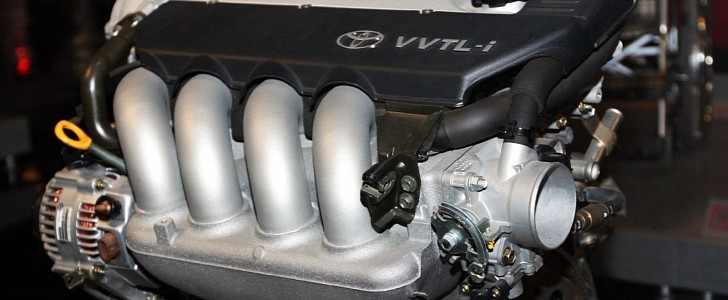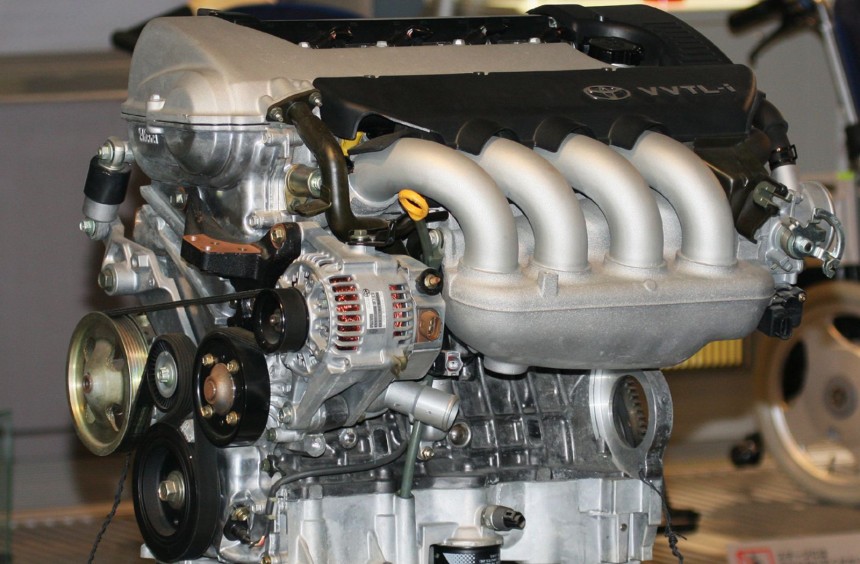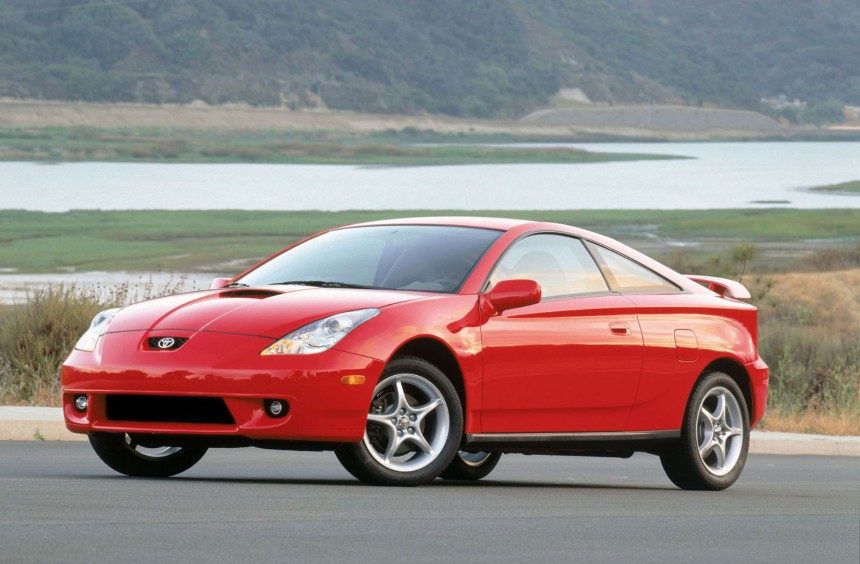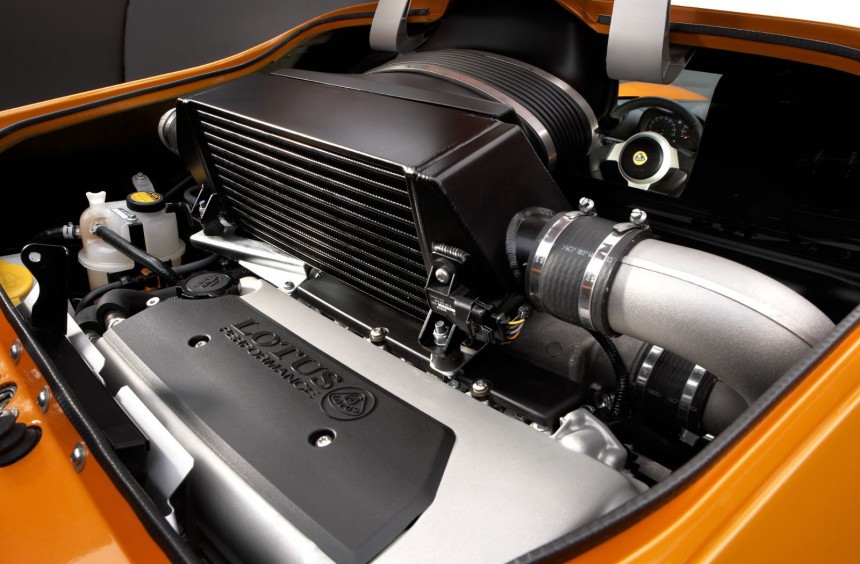Aiming to create a performance-oriented engine that would be smaller, lighter, and efficient enough to be relevant in the era of downsizing, Toyota enlisted Yamaha's help to create the iconic 2ZZ-GE. It was so good that Lotus "borrowed" the unit, fitted it with a supercharger, and turned it into a fire-breathing monster.
In the late 1990s, the auto industry began to shift its focus to smaller, fuel-efficient engines. At the beginning of this downsizing era, Toyota’s lineup included performance cars such as the legendary A80 Supra, which saw sales declining and was eventually pulled out from North American markets by 1998.
Another performance car that was getting ready for a major makeover was the MR2. The third-gen appeared in prototype guise at the 1997 Tokyo Motor Show, and by 1999, it was released in Japan. It was lighter than its predecessor but featured a tamed, 1.8-liter inline-four.
This engine was part of the ZZ family introduced in 1997, Toyota’s first four-cylinder units built on a much lighter all-aluminum block after decades of using a cast iron unit.
While the first iteration of this family, the 1ZZ, was built with fuel economy in mind, it was limited in terms of power delivery.
In 1999, Toyota engineers began developing the 2ZZ, and to make sure it would be able to serve as the powerplant for the company’s more performance-oriented models, they enlisted the help of Yamaha to design a new cylinder head.
Coupled with a lightweight rotating engine assembly which featured forged steel connecting rods, redesigned pistons, higher compression ratio, and the innovative dual camshaft VVTL-i (Variable Valve Timing and Lift intelligent) system that could adjust valve lift, duration, and timing, the newly created 2ZZ-GE was capable of easily withstanding high revs, close to its redline.
The engine was used on many Toyota models, the most popular of them being the performance variants of the seventh-generation Celica.
In the U.S., that Celica model was called GT-S, a 180-hp (134-kW) thrill machine that could accelerate from 0 to 60 mph (96 kph) in 6.2 seconds.
On the Old Continent, the performance model was called TS and produced 9 additional hp, while in Japan, the SS-II Celica’s 2ZZ-GE made 187 of them.
For the first few years of production, the engine gained a bad reputation for its failing lift bolts that didn’t damage the engine but exponentially decreased its performance. Fortunately, Toyota redesigned the bolts in 2002.
Overall, the engine was so good and lightweight that Lotus ended up using it for its sports cars. What contributed to that decision was the fact that the aging Rover K-series that powered its previous model was no longer emission-compliant in Europe and the US.
Thus, the newer Elise Series 2 models, the Exige Series 2, and even the 2-Eleven track weapon ended up having a Japanese heart. The latter model, along with the Exige S launched in 2006, got a supercharged and intercooled variant of the 2ZZ-GE, which took power well above 200 hp.
While that may not seem much, don't forget that Lotus is famous for creating lightweight machines, so that much power on cars that weigh under 2,200 lbs (1,000 kg) resulted in supercar-killing power to weight ratios.
For those who want to tune it, this engine is not as upgradable as other famous Toyota units, but that's not necessarily a bad thing.
More power can be obtained from a 2ZZ-GE, following in the footsteps of Lotus, by slapping a supercharger and an intercooler onto it. Thanks to its stock forged internals, it doesn’t need to be disassembled and tinkered with in any other way if it’s in a good state.
Toyota has built some epic engines throughout the years, and its collaboration with Yamaha in the late nineties gave birth to one of its most rabid four-cylinders.
The 2ZZ-GE will be remembered as an example of engine downsizing done right since the Japanese automaker managed to build a smaller, lighter, and more efficient power plant without sacrificing the sporty nature of its previous performance-oriented engines.
Another performance car that was getting ready for a major makeover was the MR2. The third-gen appeared in prototype guise at the 1997 Tokyo Motor Show, and by 1999, it was released in Japan. It was lighter than its predecessor but featured a tamed, 1.8-liter inline-four.
This engine was part of the ZZ family introduced in 1997, Toyota’s first four-cylinder units built on a much lighter all-aluminum block after decades of using a cast iron unit.
While the first iteration of this family, the 1ZZ, was built with fuel economy in mind, it was limited in terms of power delivery.
Coupled with a lightweight rotating engine assembly which featured forged steel connecting rods, redesigned pistons, higher compression ratio, and the innovative dual camshaft VVTL-i (Variable Valve Timing and Lift intelligent) system that could adjust valve lift, duration, and timing, the newly created 2ZZ-GE was capable of easily withstanding high revs, close to its redline.
The engine was used on many Toyota models, the most popular of them being the performance variants of the seventh-generation Celica.
On the Old Continent, the performance model was called TS and produced 9 additional hp, while in Japan, the SS-II Celica’s 2ZZ-GE made 187 of them.
For the first few years of production, the engine gained a bad reputation for its failing lift bolts that didn’t damage the engine but exponentially decreased its performance. Fortunately, Toyota redesigned the bolts in 2002.
Overall, the engine was so good and lightweight that Lotus ended up using it for its sports cars. What contributed to that decision was the fact that the aging Rover K-series that powered its previous model was no longer emission-compliant in Europe and the US.
Thus, the newer Elise Series 2 models, the Exige Series 2, and even the 2-Eleven track weapon ended up having a Japanese heart. The latter model, along with the Exige S launched in 2006, got a supercharged and intercooled variant of the 2ZZ-GE, which took power well above 200 hp.
For those who want to tune it, this engine is not as upgradable as other famous Toyota units, but that's not necessarily a bad thing.
More power can be obtained from a 2ZZ-GE, following in the footsteps of Lotus, by slapping a supercharger and an intercooler onto it. Thanks to its stock forged internals, it doesn’t need to be disassembled and tinkered with in any other way if it’s in a good state.
Toyota has built some epic engines throughout the years, and its collaboration with Yamaha in the late nineties gave birth to one of its most rabid four-cylinders.
The 2ZZ-GE will be remembered as an example of engine downsizing done right since the Japanese automaker managed to build a smaller, lighter, and more efficient power plant without sacrificing the sporty nature of its previous performance-oriented engines.












